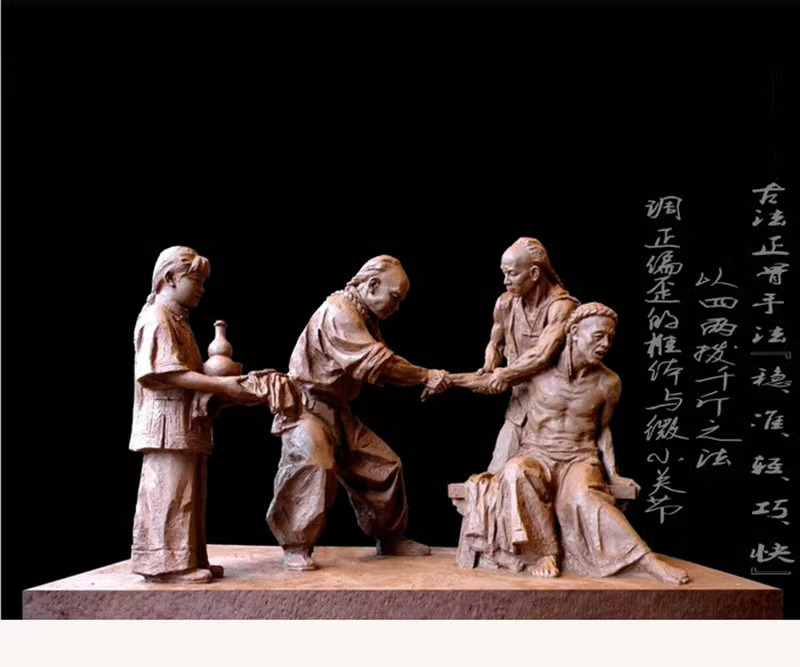About Tit Tar

a.k.a. Traditional Chinese Medicine Orthopaedics and Traumatology

Tit Tar, also known as TCM (Traditional Chinese Medicine) Orthopaedics and Traumatology, is a technique designed to treat injuries from falls and blows during martial art practices. During the Chinese emigration to Southeast Asia in 19th century, ancestors brought not only Chinese martial arts but also Tit Tar technique for treating fractures and injuries. As a result, Tit Tar became well-known for treating musculoskeletal injuries among the local communities.
Tit Tar focuses on the diagnosis and treatment of injuries affecting bones, joints, muscles, and fascia. It works hand-in-hand with TCM principles, incorporating various techniques such as External Herbal Applications, Bone Settings, Acupuncture, Internal Herbal Medicine, Gua Sha (Scraping), Tui Na (Therapeutic Massage) and Cupping. Tit Tar is especially effective in treating conditions like fractures, dislocations, soft tissue injuries, and rheumatic diseases, with unique advantages and a wealth of clinical experience.

CORE TCM THEORIES
Tit Tar is based on the holistic view of TCM and the principle of syndrome differentiation. It emphasizes on the body’s overall unity and its self-healing ability. Key theories include:
- Qi and Blood Flow: Healthy tissue relies on smooth qi and blood circulation. Reconditioning of qi & blood is crucial for quick recovery from an injury.
- Organs and Meridians: By improving the functionality of internal organs and meridians, the healing of surrounding injured part will be enhanced.
- Balance of Yin & Yang: Emphasizes on the balance of internal and external forces, the treatment aims to coordinate yin and yang within the body.
STRENGTHS AND UNIQUE FEATURES
- Holistic Approach: Treatment focuses not only on the injured section but also on restoring overall body condition.
- Minimal Side Effects: Natural remedies and techniques offer higher safety with few side effects.
- Customized Care: Treatment is tailored based on the needs and conditions of each patient.
- Integration of Treatment and Rehabilitation: Recovery exercises & treatment to be executed simultaneously, in order to speed up healing process and improve quality of life.
MODERN DEVELOPMENT
Tit Tar has evolved over the years with the integration of modern medicine.
- Modern Diagnostic Tools: Advanced imaging technologies have enhanced the precision of diagnosis.
- Herbal Medicine Research: Scientific studies has identified the active compo- nents of herbs, improving its efficacy.
- Development of New Equipment for treatment: By combining traditional methods with modern technology, the efficiency of the treatment tools has improved tremendously.
- Clinical Studies: Extensive clinical trials & successful cases have further refined and standardized treatment methods, ensuring greater scientific validity.
SUMMARY
Tit Tar plays an essential role in the prevention, treatment, and rehabilitation of bone & muscle injuries. It continues to evolve, incorporating modern scientific advance- ments to provide effective and comprehensive treatments for patients.
